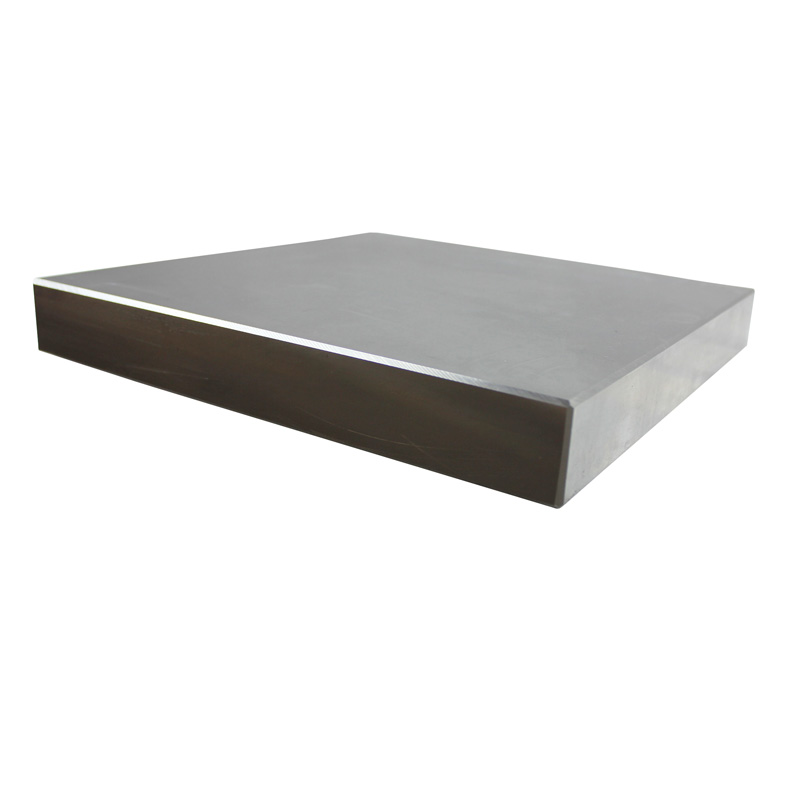What Makes Mold Plates Crucial for Modern Manufacturing?
2025-11-03
Mold plates are fundamental components in injection molding, die casting, and precision stamping processes. They serve as the backbone of molding systems, ensuring the accurate shaping of components across industries, from automotive and electronics to consumer goods. High-quality mold plates directly influence product consistency, longevity, and overall manufacturing efficiency.
Key Product Parameters of Mold Plates:
| Parameter | Specification / Detail |
|---|---|
| Material | High-grade stainless steel, P20, H13, or S136 mold steel |
| Hardness | 28–32 HRC for P20, 48–52 HRC for H13 |
| Surface Treatment | Polished, nitrided, or coated with anti-corrosion layer |
| Dimensional Accuracy | ±0.01 mm |
| Maximum Plate Size | Up to 1500 x 1000 mm depending on design |
| Applications | Injection molding, die casting, stamping, prototyping |
| Thermal Conductivity | Optimized for uniform temperature distribution |
| Lifespan | 500,000+ molding cycles depending on material and care |
These specifications illustrate the technical precision required in producing mold plates and their critical role in achieving flawless end products. Manufacturers must consider factors such as material selection, hardness, and thermal properties when selecting a mold plate for specific industrial applications.
Why Are Mold Plates Essential for Efficiency and Quality in Manufacturing?
Mold plates impact production efficiency, quality, and cost-effectiveness. Their design, material composition, and surface treatment determine the molding process’s success, including the accuracy, cycle time, and durability of molds.
Core Advantages of High-Quality Mold Plates:
-
Precision and Stability: Mold plates maintain dimensional stability under repeated stress, preventing warping or misalignment during production.
-
Enhanced Durability: Advanced steel grades and surface treatments ensure resistance to wear, corrosion, and thermal fatigue, extending operational lifespan.
-
Improved Production Efficiency: Uniform heat distribution and stable structural properties reduce cycle time and minimize defects.
-
Cost-Effective Maintenance: High-quality mold plates require fewer repairs, reducing downtime and operational costs.
-
Versatility: Suitable for various molding processes, including injection molding, die casting, and stamping.
In industries where precision and repeatability are non-negotiable, such as electronics, automotive components, and medical devices, mold plates play a pivotal role in achieving stringent quality standards. By selecting mold plates that balance hardness, thermal conductivity, and surface finish, manufacturers can improve output while minimizing waste.
How Do Mold Plates Enhance Production Performance and Longevity?
The performance of a mold plate depends on material selection, machining accuracy, and maintenance practices. Proper handling and installation further optimize its functional benefits.
Key Considerations for Mold Plate Performance:
-
Material Selection: Choosing the appropriate steel grade is critical. For high-volume production, H13 steel provides superior hardness and heat resistance, while P20 steel is ideal for prototypes and medium-run molds.
-
Surface Treatment: Polishing, nitriding, or coating enhances wear resistance and reduces sticking of molded parts.
-
Dimensional Accuracy: Tight tolerances (±0.01 mm) ensure precise mold alignment and reduce defects.
-
Thermal Management: Mold plates with optimized thermal conductivity support consistent cooling, reducing cycle times and improving part quality.
Maintenance Tips to Prolong Mold Plate Lifespan:
-
Regular cleaning and lubrication prevent surface corrosion.
-
Avoid abrupt thermal shocks to maintain structural integrity.
-
Inspect plates periodically for wear or deformation.
Frequently Asked Questions about Mold Plates:
Q1: How often should mold plates be inspected for wear?
A1: Mold plates should be inspected after every 50,000 to 100,000 molding cycles depending on the material and process conditions. Regular inspections help detect early signs of wear, such as minor scratches or corrosion, which can be corrected before impacting product quality.
Q2: Can mold plates be repaired or refurbished?
A2: Yes, minor wear or surface damage can be repaired by polishing, nitriding, or coating. However, severe structural deformation may require replacement to maintain precise tolerances and prevent production issues.
What Are the Future Trends and Innovations in Mold Plate Technology?
As manufacturing evolves, mold plates continue to adapt to the demands of higher precision, faster cycle times, and sustainable production.
Emerging Trends in Mold Plate Design and Application:
-
Advanced Materials: Composite steels and hybrid alloys are being explored for higher durability and thermal efficiency.
-
Surface Engineering: Nano-coatings and diamond-like carbon (DLC) treatments are increasing resistance to wear and corrosion while reducing maintenance requirements.
-
Smart Mold Plates: Integration of temperature and stress sensors enables real-time monitoring of molding conditions, improving process control and reducing downtime.
-
Sustainable Production: Lightweight and recyclable mold plates are gaining traction, supporting eco-friendly manufacturing initiatives.
-
Automation Compatibility: Mold plates designed for robotic handling and automated mold changing systems enhance operational efficiency in modern factories.
In addition to these technical advancements, mold plate manufacturers increasingly focus on reducing lead times and customizing plates for specialized production requirements, catering to industries with strict tolerances and high-volume output.
Mold plates are a cornerstone of modern manufacturing, delivering precision, efficiency, and durability across various industries. Their material composition, surface treatment, and dimensional accuracy directly impact production quality and cost-effectiveness. Manufacturers can maximize benefits by understanding the unique properties of each mold plate type and implementing rigorous maintenance practices.
Brands like KWT have set industry benchmarks in delivering high-performance mold plates designed to meet evolving manufacturing needs. For businesses seeking reliable, durable, and efficient mold plates, partnering with experienced providers ensures both productivity and product quality.
Contact us today to explore KWT’s range of mold plates tailored to your specific industrial requirements.



